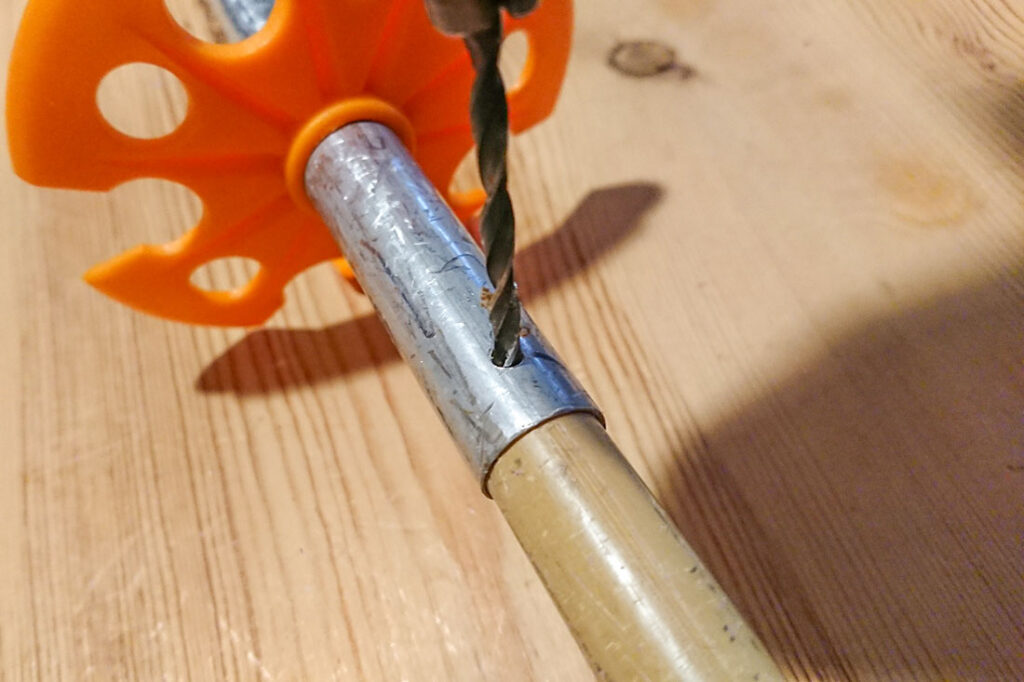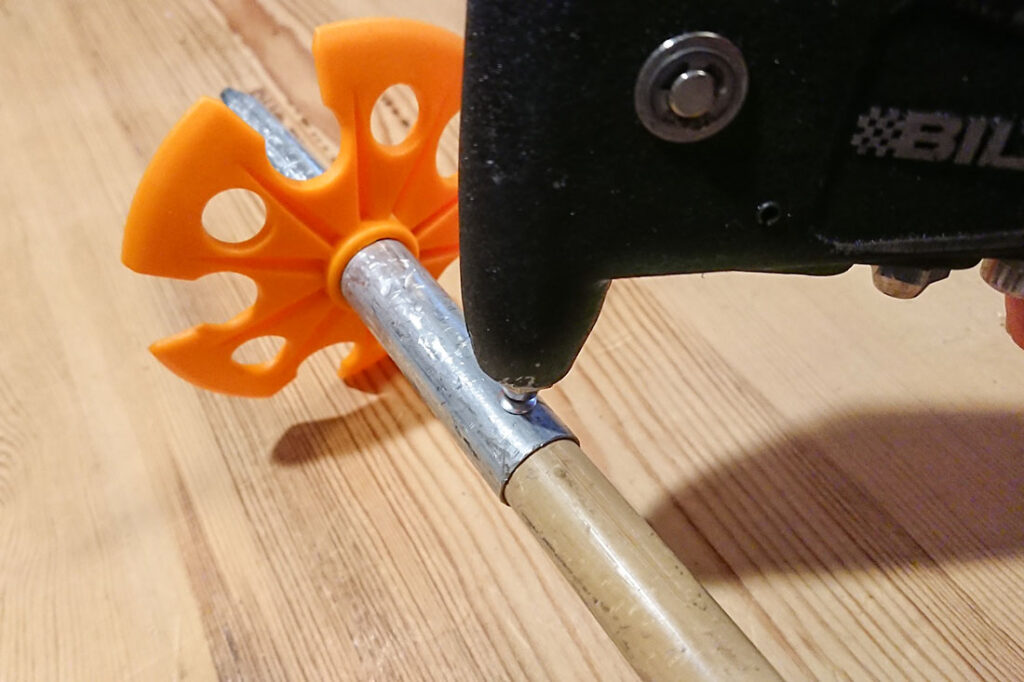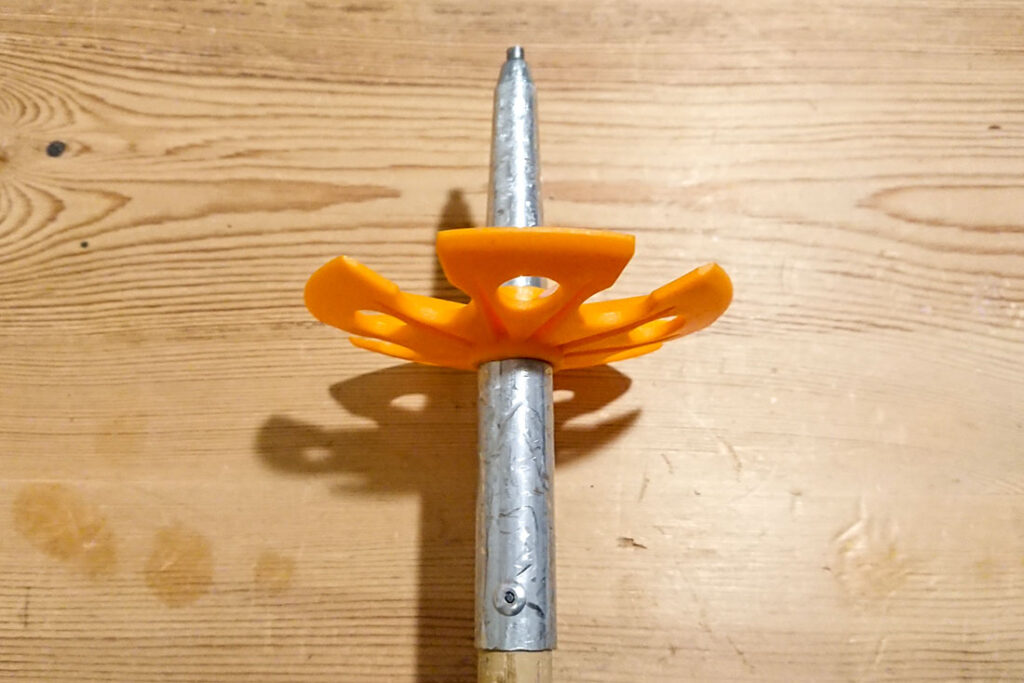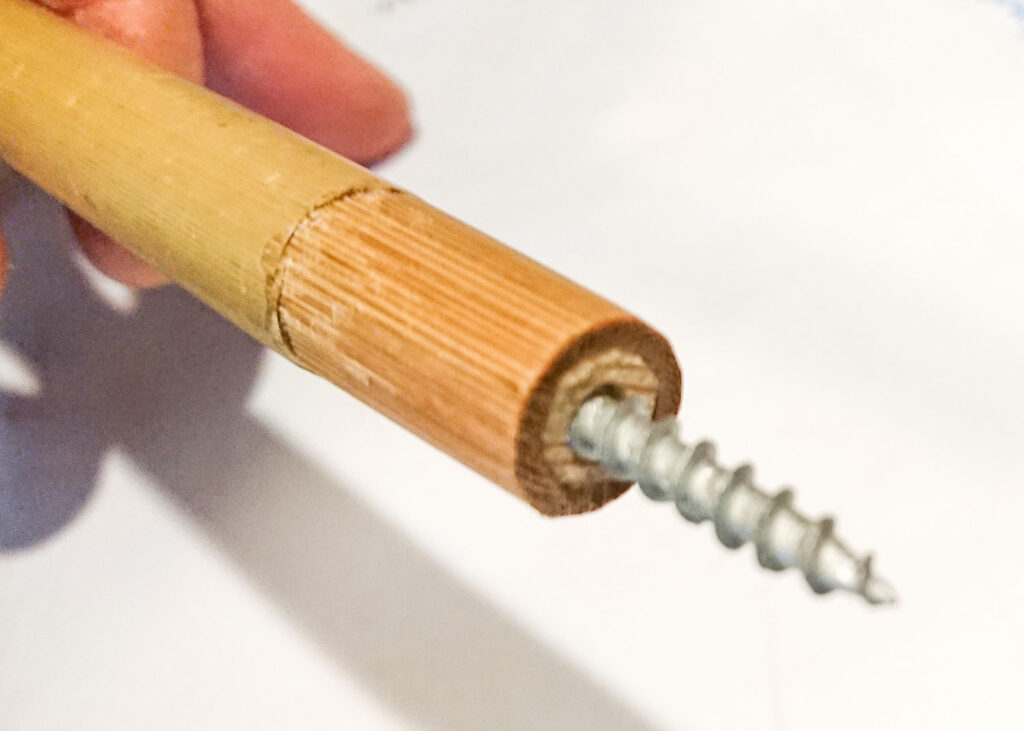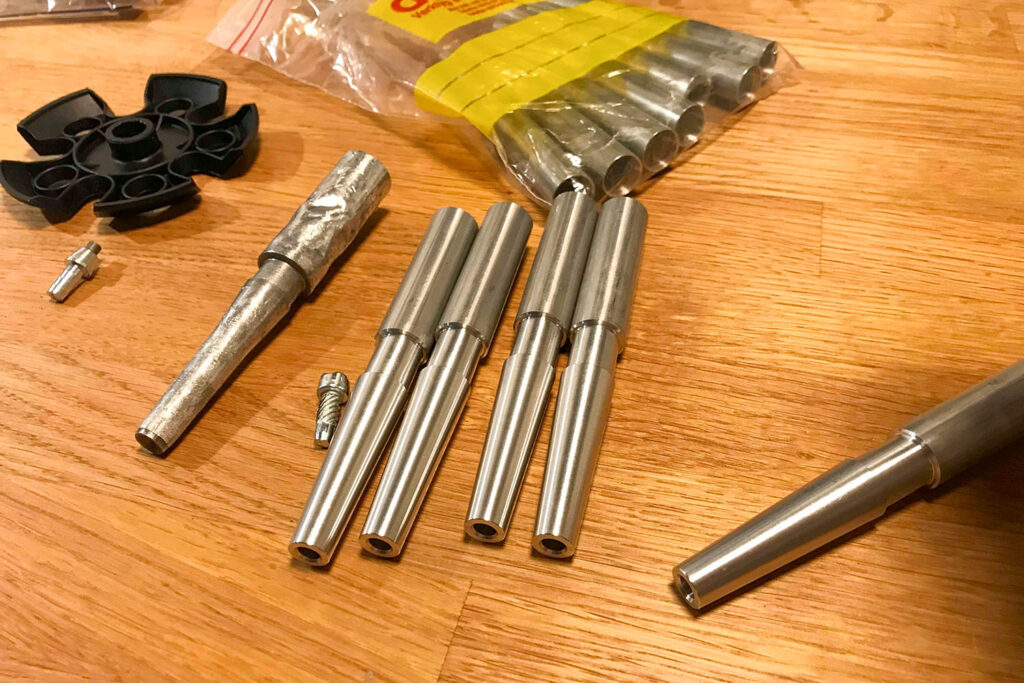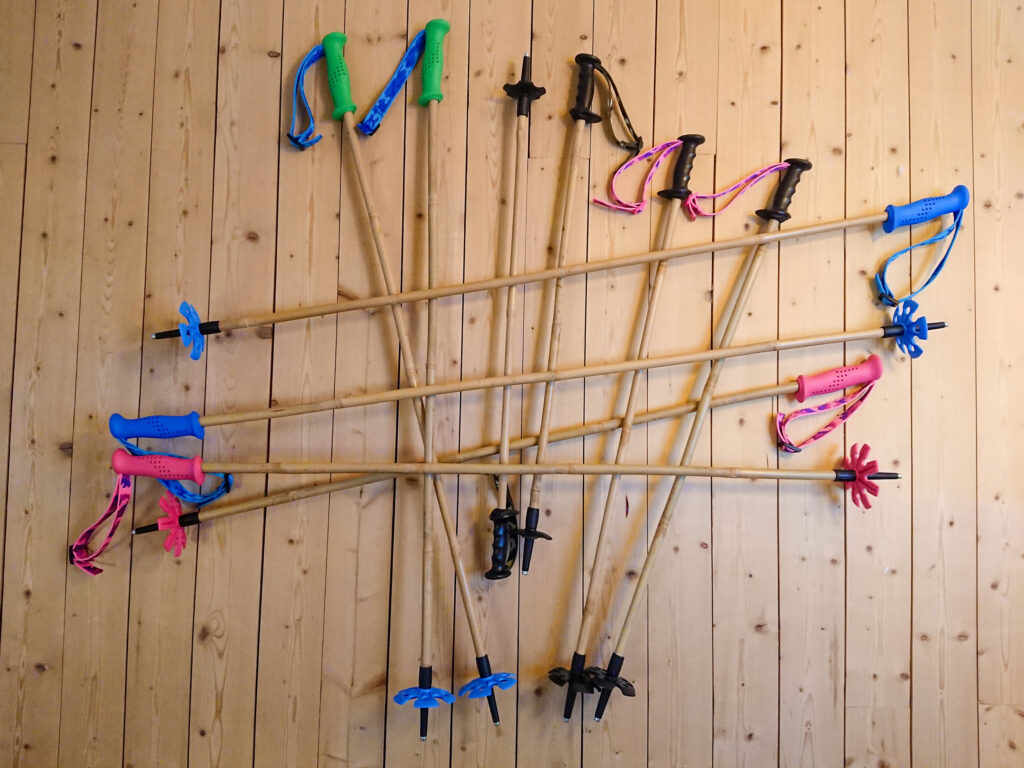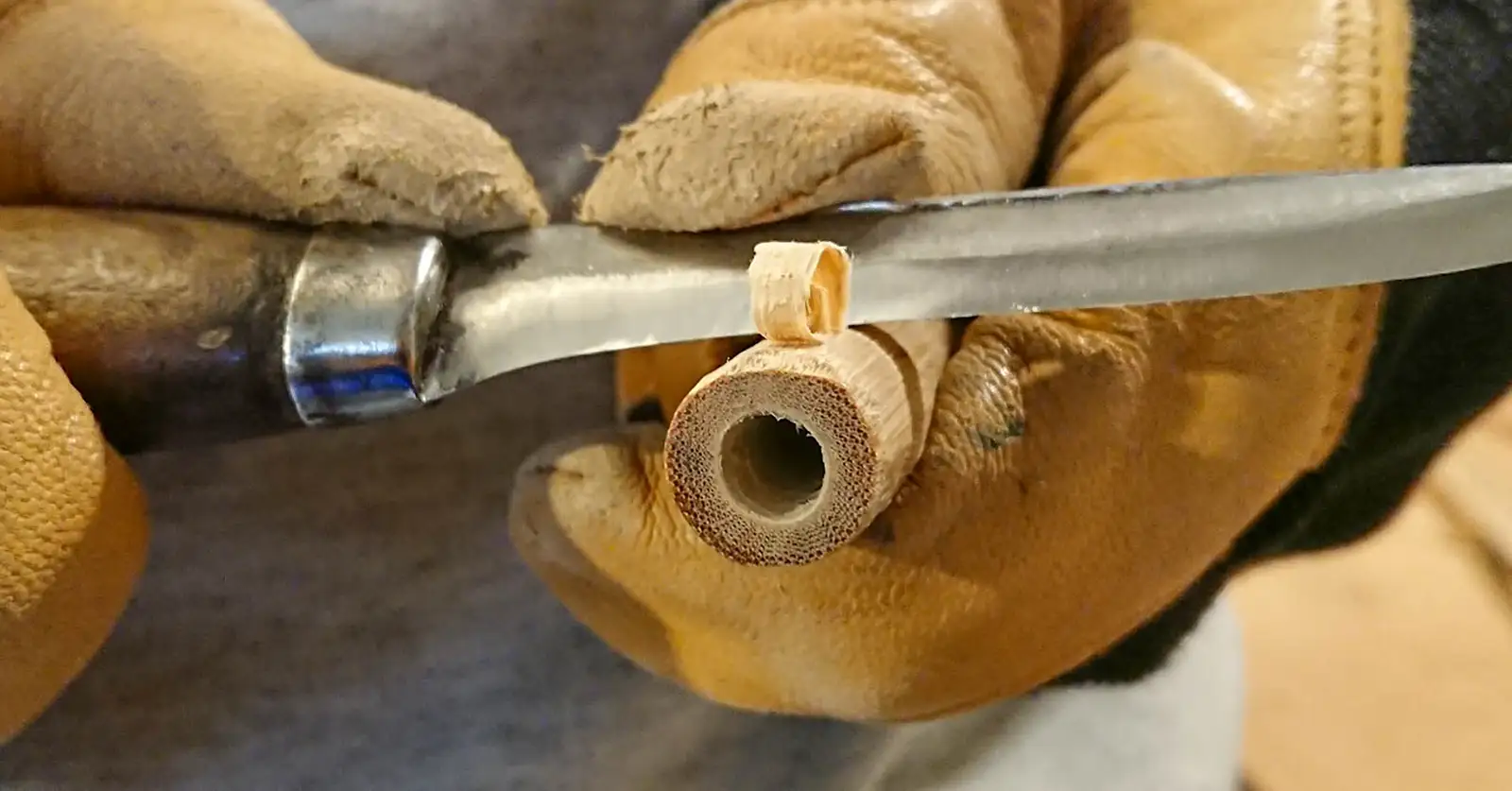Why should I make your ski poles when you can build them yourself? It’s both fun and usually easy to create things yourself, at least that’s what I think. I’m not into this to peddle poles trying to get rich. I do this to cause less damage to the climate and the environment. Bamboo ski poles may be a drop in the ocean for the climate, but many small streams make a big river … So, the more ski poles of bamboo on the mountains the better.[1]
To build your own bamboo ski poles is quite cheap. If you have a couple of broken poles, you can get grips and baskets from them. Bamboo of the highest quality, straight with thick walls, may not be easy to find everywhere. But you can start with any quality. All bamboo in hardware stores and garden markets is Tonkin bamboo. With a little luck you’ll find excellent canes there. You can buy specialized ferrules[2] if you can’t come up with an idea of how to reuse the old tips from your aluminum poles. Check below for links to where you can buy bamboo, grips, baskets, ferrules, tips and straps.
1 Bamboo offers a powerful climate change solution that has been ranked as the 35th most effective solution by researchers in Project Drawdown.
2 The ferrule is the cap, of aluminum or plastic, put around the end the cane to prevent splitting and to secure the bamboo, and which to attach the tip and the basket.
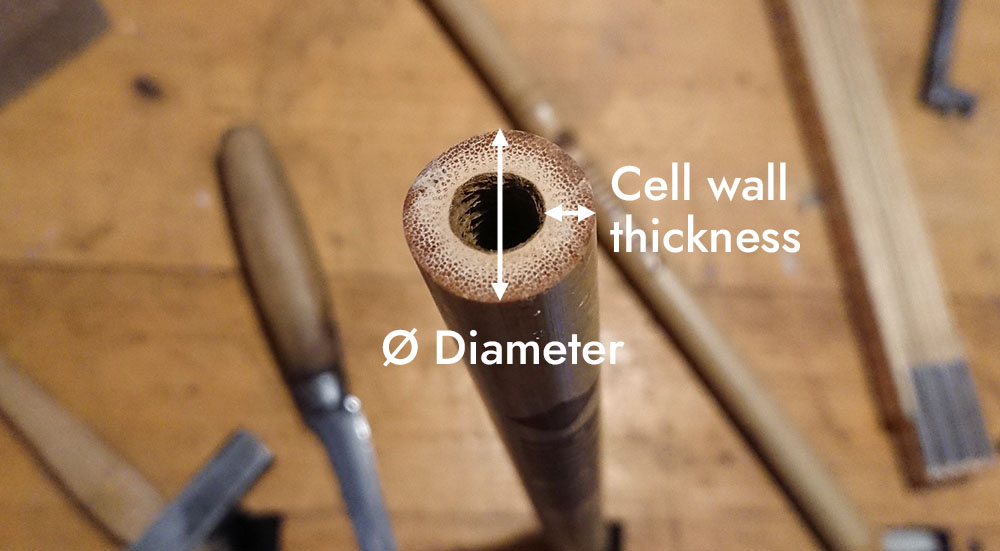
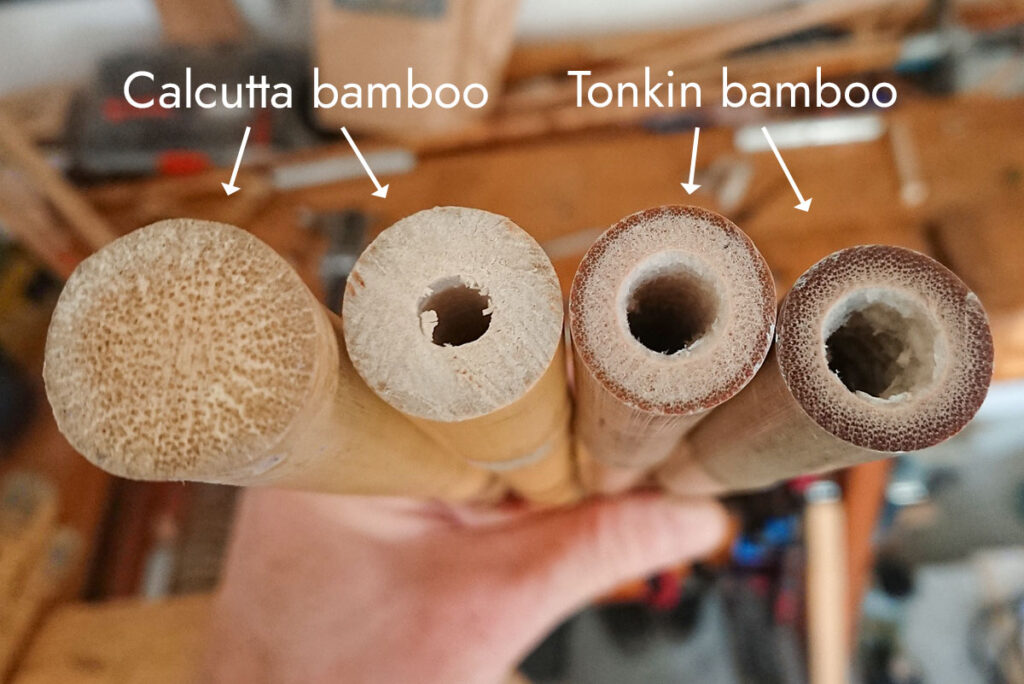
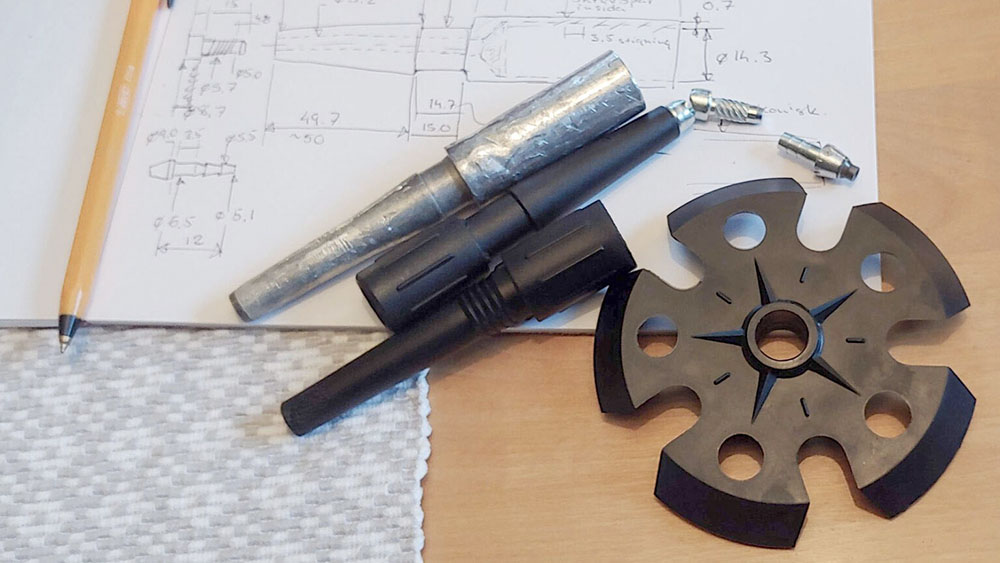
Building your own bamboo ski poles
This is how I basically build my ski poles. However, I have an updated ferrule with internal threads that I secure with both glue and by screwing it onto the bamboo. Here is a DIY for all of you that don’t have my kind of ferrule. For this you need the following:
Materials
- Bamboo canes
- Grips
- Straps and screws
- Ferrules/tips
- Baskets that fit the ferrules
Tools
- Jig saw or ”Japanese saw” (manual)
- Knife
- Flat hand file (fine)
- Glue gun and hot melt adhesive stick (EVA based)
- Optional: Pop rivets + pop rivet gun, or wood plugs + wood glue (only if you use rubber-like grip)
DIY instructions step by step
Time needed: 2 hours
If you have the parts and the tools mentioned above you’re good to go.
- Finding and matching bamboo canes
Begin by finding two bamboo canes that match each other as much as possible. They should have the same diameters, the same thickness of the cell walls, and preferably the nodes at the same interval. Then you get a well-balanced feeling with the poles.
- Calculate the lengths
Calculate how long your ski poles you should be—the total length from the top of the grip to the bottom of the tip. If you don’t know that, check out this link! Once you know your total pole length, calculate how long the bamboo cane itself should be! Do this by measuring how much the grip and ferrule/tip add to the height. The length of the bamboo cane is simply your total ski pole length minus A and C. Then B becomes the measurement of the shaft.

- Cut and adapt the bamboo canes
Now match the diameter of your grips and ferrules with your bamboo canes. If they fit perfectly, just attach the grips by pressing them on. However, since I use rubber-like grips, I think it’s good if the cane is slightly thicker than the hole in the grip. Because then I don’t need any hot melt adhesive. I prefer 1 mm wider diameter bamboo than the hole in the grip, for example Ø16 mm grip for Ø17 mm bamboo. If the bamboo is too thick, I carefully carve around the bamboo cane and file until it fits perfectly. For the ferrule you need a little space for the hot melt glue.
- Mounting the grips
Bevel and trim the edges of the canes with a knife. If the grips are difficult to press on, use the old “plumber’s trick”: dip a finger in liquid linseed oil soap and rub it inside the grip. That makes it easier to press on the grips. If the grips aren’t rock solid on your canes, you must use hot melt adhesive. Note! If you use soft rubber-like grips, the screws may not attach well enough to secure the straps. In that case you may glue a wooden dowel in the hole of the thick end of your canes, before attaching the grips.
- Mount the ferrules
Tehnomat’s plastic ferrules don’t offer much surface area to glue on. Therefore I have made my own aluminum ferrules with bigger area. All ferrules can attached with hot melt adhesive, but the question is, will they stay put? With Tehnomat’s plastic ferrules there are three ways to anchor them:
Hot melt glue only: Press hot melt glue into the ferrule and rotate as you press on the ferrule.
Hot melt glue + pop rivet: Attach the ferrule with hot melt adhesive. Then drill a hole with the same diameter as the pop rivet. Drill through both the ferrule and the bamboo, but only on one side. Pop the rivet! See pictures below!
Dowel + screw: Carve wooden dowels and drill holes all the way through. Screw a decking screw all the way through and glue the dowel with the screw tip pointing outwards (see picture below) using wood glue. Tehnomat’s ferrules have a Ø5 mm hole through the center. With a screw + hot melt glue they are firmly locked to the bamboo cane. - Mount the straps
Attach the straps, if you need any. I use stainless steel screws 4×30 mm.
- Press on the baskets
Press the baskets on, or screw if you use Tehnomats ”threaded” ferrules and baskets.
- Done diddly done!
Grip it and rip it!
Finding parts for your bamboo ski poles
Bamboo
Bamboo is available pretty much everywhere, and it is almost always Tonkin bamboo (Pseudosasa amabilis). I use Calcutta bamboo (Dendrocalamus strictus) since it’s tougher and stronger, and more tapered like regular ski poles. I buy directly from India but in the USA there are a few importers which also sell small volumes, like Frank’s Cane and Rush Supply or Lobster Port Fishing Supply. Tip! Get the grips and ferrules before buying the bamboo sticks. It’s easier to choose bamboo with the right diameter that fits the grips and ferrules than the other way around.
Grip
Grips are available from Tehnomat. I use “elastic soft” which is a grip made synthetic rubber (thermoplastic elastomer, TPE-SEBS). Available in Ø16 mm and Ø18 mm. The most eco-friendly choice is to reuse grips from old poles. Instead of just a regular grip you can make your own extended long grip, like here where I use hemp twine, or here where I use bark tanned reindeer leather. Or, you can make just one long grip of hemp, like my Swiss friend of Les Bâtons.
Wrist strap
Straps are also available at Tehnomat, but if you have old grips, you probably also have old straps. Otherwise, it is easy to make your own from polypropylene webbing and buckles. Webbing is available in several colors and patterns, for example at Jonic-Textil.
Ferrule and tip
Ferrules and ski tips are harder to find. Cylindrical ferrules in plastic are available from Tehnomat and usually come with a tip already mounted. But if you are handy, you may be able to rebuild the tip from your discarded aluminum ski poles to work with bamboo. Tehnomat also offer ferrules with external threads, for quick and easy change of baskets. This way you can change from piste to powder baskets in a second. You can also create a tip without ferrule, like Blake Andreassen does here.
Basket
Baskets are easy to find. If you reuse your old ones, make sure the diameter of the hole matches the ferrule. Tehnomat also has a large selection of baskets.
Go for it and good luck!
Fabian Rimfors
In 2019 I was a beginner at building ski poles. You can read about my first homemade ski sticks here: The Christmas gift for the family – our first very own bamboo ski poles.
* * *
Video instructions—how to build bamboo ski poles
Alternative ferrule mounting
